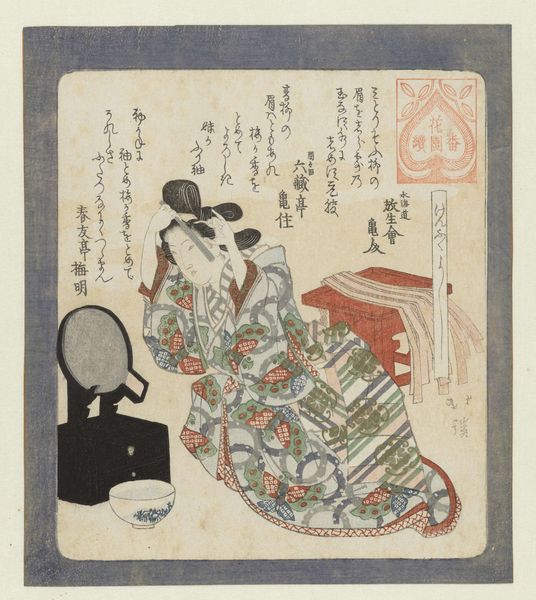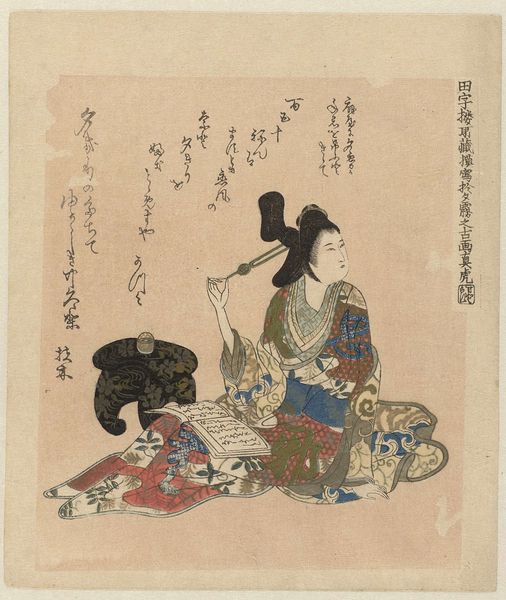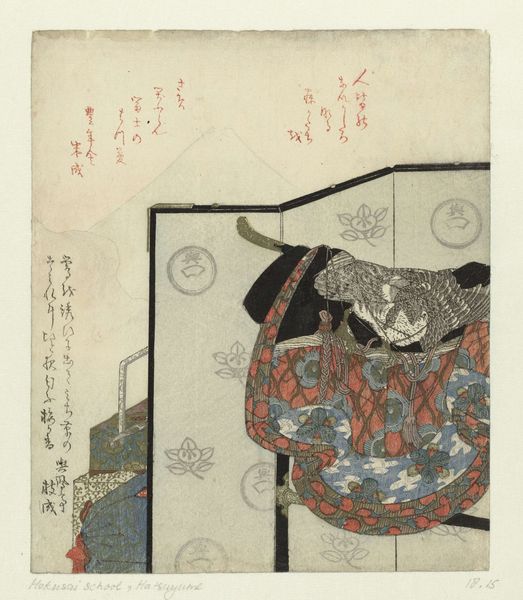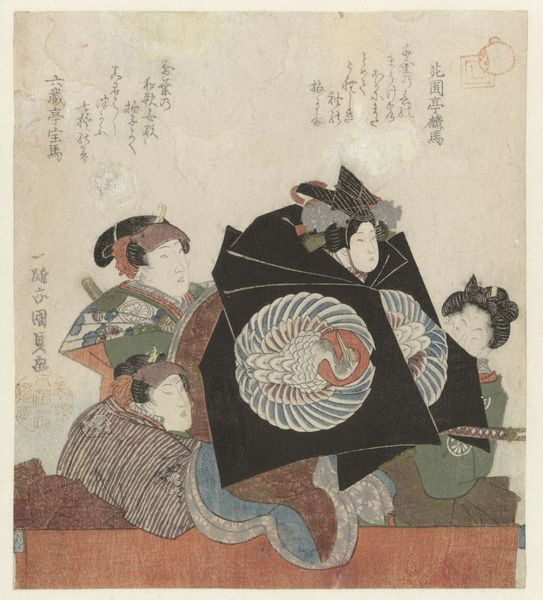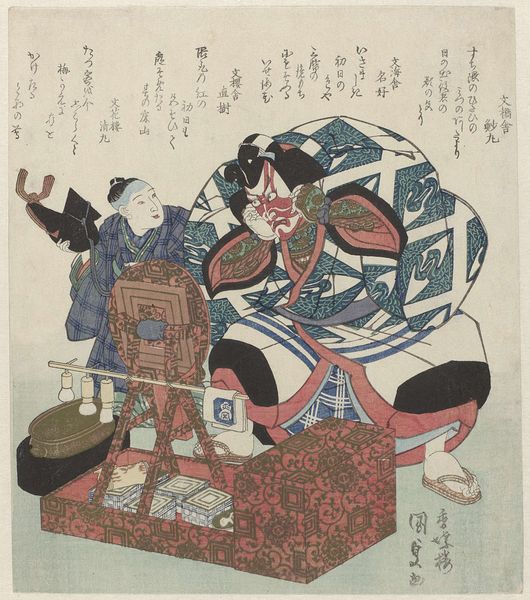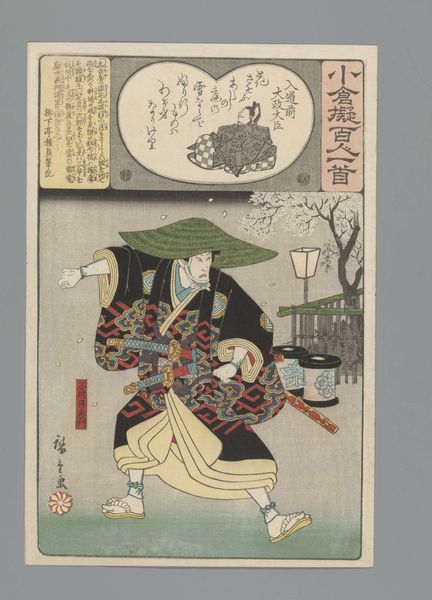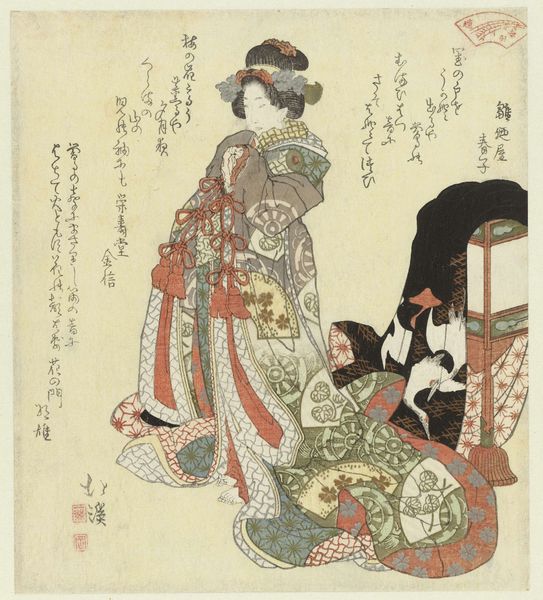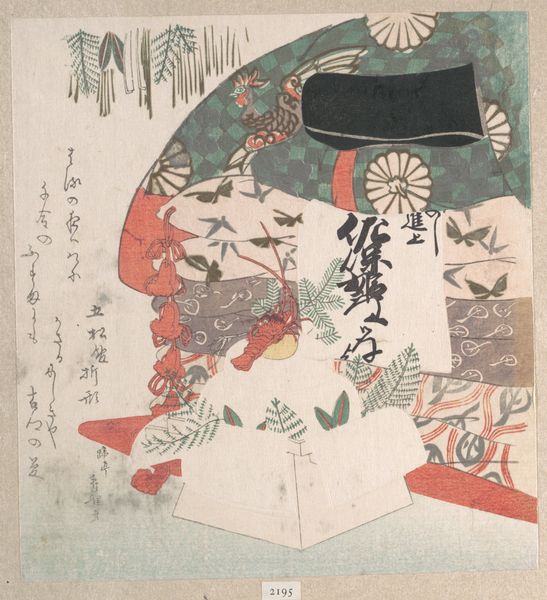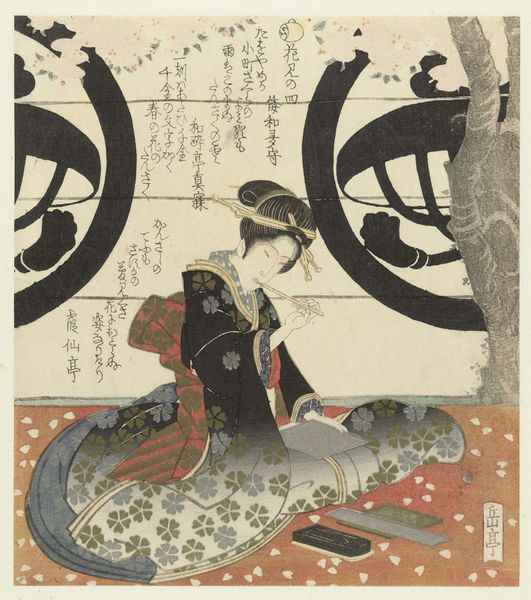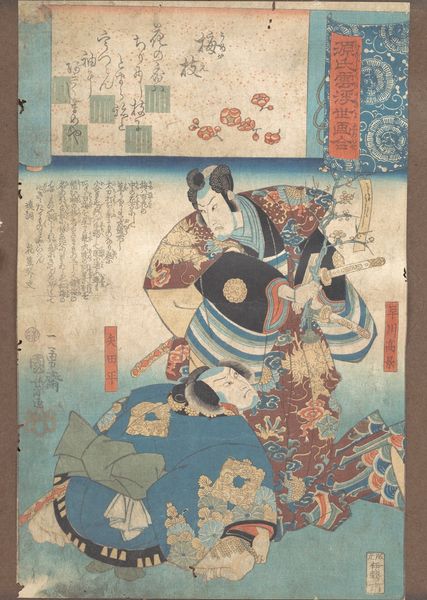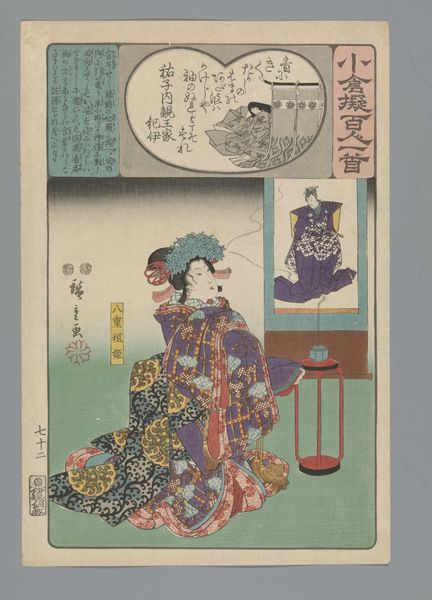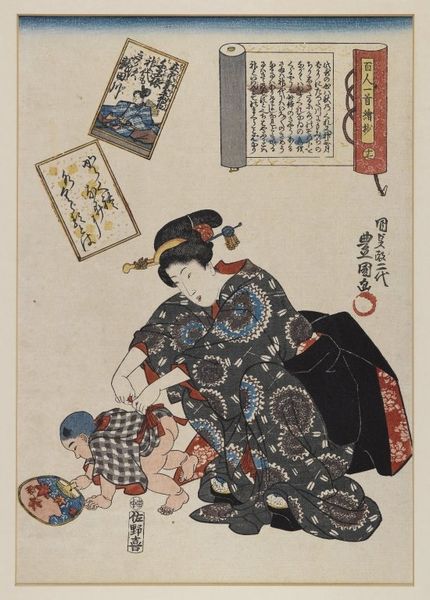
print, woodblock-print
#
portrait
#
narrative-art
# print
#
asian-art
#
ukiyo-e
#
figuration
#
woodblock-print
#
watercolor
Dimensions: height 212 mm, width 184 mm
Copyright: Rijks Museum: Open Domain
Curator: Here we have Utagawa Hiroshige's woodblock print, "Votief met een portret van Bandô Mitsugorô III," created in 1821. It resides right here at the Rijksmuseum. Editor: My first impression is the actor's commanding presence, really held captive by the plum blossoms' delicate fragility that frames him. I notice the sharp contrasts—between the heavy costume and those airy petals. Curator: Indeed, that contrast is quite striking. It's an Ukiyo-e print, so it speaks to the popular culture of Edo-period Japan, particularly the kabuki theatre. These prints were not just art, but commodities, used to promote actors and plays, very much interwoven with the economy. Editor: Exactly, it's also about the materials, the wood, the labor. Carving those fine lines for the actor's expression, or the texture on his garments, required intense skill. And the paper itself—where did it come from, who made it? Those processes inform the aesthetic. The text blocks as well indicate craftsmanship meeting market demand. Curator: Precisely. This portrait isn’t just an image; it's a commentary on fame, performance, and the societal role of kabuki actors. The text offers a promotional context, suggesting it would be posted to announce his performances at the Kabuki theater. It captures a moment in time, immortalized and circulated amongst the masses. Editor: The printing process, itself, made it accessible to many and not exclusively elitist, connecting art to labor and promoting the spectacle. This very piece brings into question what we prioritize in art. It forces you to reflect on the value and context, how these were consumed and their relation to artistic movements today. Curator: I find it powerful to see how a work, originally intended for promotion, provides a window into a whole cultural landscape. The actor, the play, the audience – it’s all encapsulated in this image and shows us not just art history, but socio-political history too. Editor: Absolutely. Considering those interwoven layers really challenges conventional perspectives and reminds us to value what it takes to construct an artwork, in its making, the labour and materials matter!
Comments
No comments
Be the first to comment and join the conversation on the ultimate creative platform.
